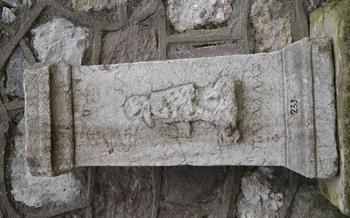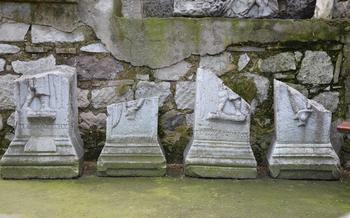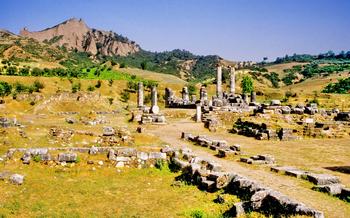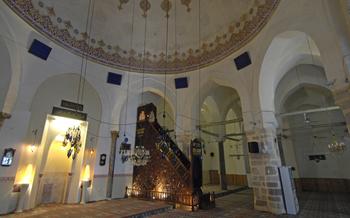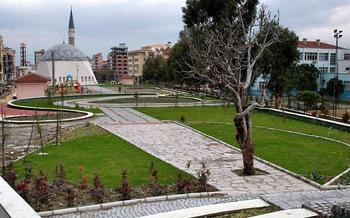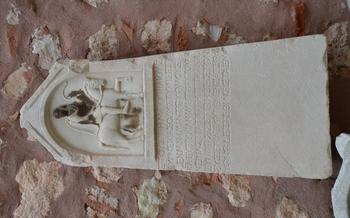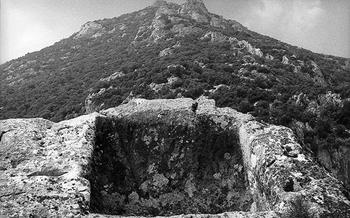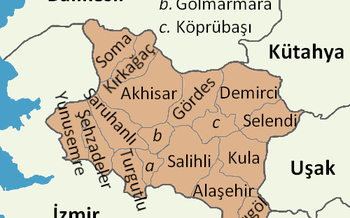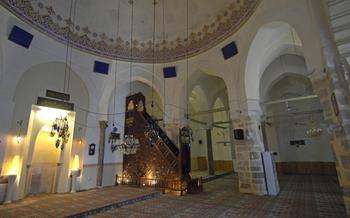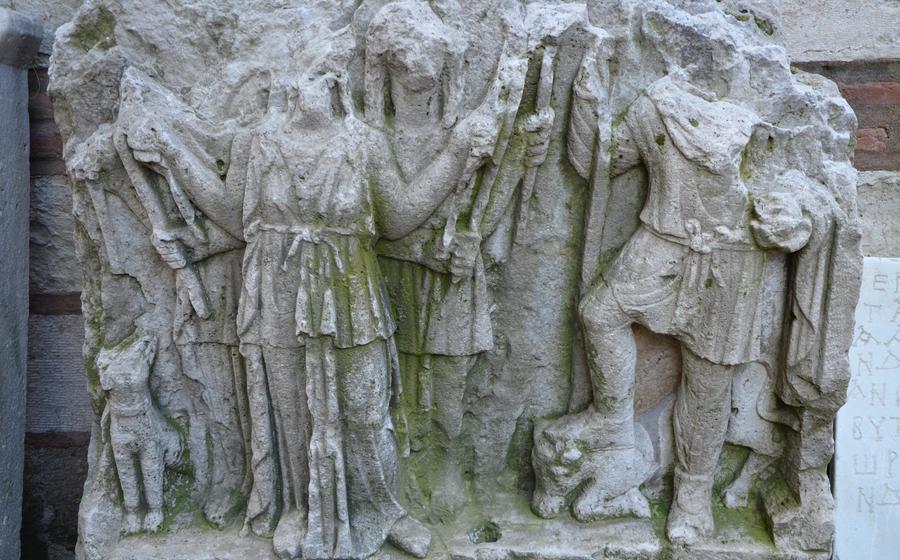
Manisa Archaeological Museum
- Manisa Archaeological Museum: A Journey Through History
- Unveiling the Ancient City of Sardis
- Tracing the Footsteps of Lydia's Kings
- A Culinary Adventure in Manisa
- Manisa's Vibrant Textile Traditions
- The Enchanting Sipylus Mountain
- Unveiling the Secrets of Sardis' Gymnasium
- A Stroll Through Manisa's Historic Center
- The Legendary Tomb of Tantalus
- Delightful Local Festivals and Events
- Hidden Gems Off the Beaten Path
- A Culinary Masterclass with Local Chefs
- Exploring Manisa's Rich Birdlife
- Insider Tip: Unveiling the Hidden Treasures of Manisa
Manisa Archaeological Museum: A Journey Through History
Manisa Archaeological Museum stands as a testament to the rich cultural heritage and historical significance of the city of Manisa. Located in the heart of the city, the museum houses an impressive collection of artifacts that provide a glimpse into the ancient civilizations that once flourished in this region.
Founded in 1937, the museum initially occupied a small room within the governor's office. However, due to the increasing number of artifacts discovered during excavations in the surrounding area, a new building was constructed in 1970 to accommodate the growing collection. The museum's exhibits are arranged chronologically, allowing visitors to trace the history of human settlement in Manisa from prehistoric times to the Ottoman period.
Among the museum's highlights are the artifacts from the ancient city of Sardis, the capital of Lydia, which was one of the most powerful kingdoms in ancient Anatolia. These artifacts include exquisite jewelry, coins, sculptures, and pottery that showcase the artistic prowess and craftsmanship of the Lydians.
The museum also houses a significant collection of Roman and Byzantine artifacts, including statues, mosaics, and inscriptions that provide insights into the later history of the region. Visitors can also admire a collection of Islamic artifacts, such as ceramics, manuscripts, and metalwork, which testify to the rich cultural heritage of the Seljuk and Ottoman periods.
With its vast collection of artifacts and well-curated exhibits, the Manisa Archaeological Museum offers a comprehensive overview of the region's history and culture. It is a must-visit destination for anyone interested in exploring the rich tapestry of civilizations that have shaped this vibrant city.
Practical Information:
- Admission Fee: 20 TL (Turkish Lira) for adults, 10 TL for students and children.
- Hours of Operation: 8:30 am to 5:00 pm, closed on Mondays.
Unveiling the Ancient City of Sardis
Sardis, once the resplendent capital of ancient Lydia, invites you on a journey through time. Nestled in the fertile plains of Manisa, this archaeological site holds the secrets of a glorious past. As you step into Sardis, prepare to be captivated by the remnants of a civilization that shaped the course of history.
The Temple of Artemis, a marvel of Ionian architecture, stands as a testament to the city's devotion to the goddess. Its majestic columns, intricately carved friezes, and awe-inspiring grandeur will transport you back to a time when faith and power intertwined.
Ascending the slopes of the Acropolis, you'll encounter the ruins of a once-thriving city. Explore the remnants of the gymnasium, where athletes honed their skills and trained for victory. Admire the intricate mosaics that adorned the floors of opulent villas, whispering tales of a luxurious past.
Sardis is not merely a collection of ruins; it's a living testament to the ingenuity, artistry, and power of an ancient civilization. As you wander through its streets, you'll feel the weight of history upon your shoulders, and the stories of Lydia's kings and queens will come alive.
Insider tip: To fully immerse yourself in the spirit of Sardis, visit the Sardis Museum, which houses a treasure trove of artifacts unearthed from the site. Its exhibits provide a glimpse into the daily lives, beliefs, and artistic traditions of the ancient Lydians.
Tracing the Footsteps of Lydia's Kings
In the heart of ancient Lydia lies a fascinating journey that takes you back to the era of powerful kings and legendary wealth. Discover the story of King Croesus, renowned for his unimaginable riches and the saying, "As rich as Croesus." Explore the ancient city of Bin Tepe, once the capital of Lydia, where the ruins of palaces and temples whisper tales of a glorious past.
Stand in awe before the Tomb of Alyattes, an impressive tumulus mound that serves as a majestic testament to the engineering prowess of the Lydians. Delve into the historical and cultural significance of these sites, where each stone holds a story waiting to be unveiled. Immerse yourself in the footsteps of Lydia's kings, and let their legacy come alive as you journey through the remnants of their ancient kingdom.
A Culinary Adventure in Manisa
Savoring the Delights of Manisa Cuisine
Manisa's rich history and cultural heritage are reflected in its diverse and delectable cuisine. A culinary adventure in Manisa is a must for any traveler seeking authentic Turkish flavors.
-
Must-Try Local Dishes: Begin your culinary journey by indulging in Manisa's signature dish, Manisa kebabı, a succulent skewer of marinated lamb grilled to perfection.
-
Mesir Macunu: A Sweet Sensation: Don't miss the opportunity to taste mesir macunu, a unique confection made from a blend of 41 spices and herbs. This sweet paste is believed to have medicinal properties and is a popular souvenir among visitors.
-
Traditional Markets and Bazaars: Immerse yourself in the vibrant atmosphere of Manisa's traditional markets and bazaars. Here, you can sample an array of regional specialties, including fresh produce, handmade cheeses, and sweet treats.
-
Culinary Heritage: Manisa's cuisine draws inspiration from ancient Anatolian traditions, blending flavors and techniques from various cultures that have shaped the region's history.
-
Food Experiences: Discover the best restaurants and food experiences in the city by seeking recommendations from locals or joining a guided food tour. Let your taste buds guide you as you embark on a culinary adventure in Manisa.
Manisa's Vibrant Textile Traditions
Manisa's textile industry holds a prominent place in Turkey's rich cultural heritage. The city has been a center of weaving and textile production for centuries, renowned for its exquisite handwoven carpets, kilims, and other textiles. These beautiful creations are not merely decorative items but also symbols of Manisa's deep-rooted cultural traditions.
To delve into this fascinating world of textiles, a visit to the Manisa Textile Museum is a must. This museum showcases a stunning collection of traditional textiles, providing insights into the intricate techniques and designs that have been passed down through generations. Visitors can admire the vibrant colors, intricate patterns, and superb craftsmanship that characterize Manisa's textiles.
Exploring the local markets and bazaars is another way to experience the city's textile traditions firsthand. Here, you can find a treasure trove of handwoven carpets, kilims, and other textiles, each with its unique story to tell. Vendors are often happy to share their knowledge about the different weaving techniques and materials used, making your shopping experience both educational and enriching.
When shopping for textiles in Manisa, it's essential to seek out genuine, high-quality products. Look for carpets and kilims with tightly woven knots, symmetrical patterns, and vibrant colors that won't fade easily. Ask vendors about the materials used and the weaving techniques employed to ensure you're getting authentic, handwoven pieces.
Manisa's textile traditions are a testament to the city's rich cultural heritage. Whether you're an avid collector, a textile enthusiast, or simply someone who appreciates beautiful craftsmanship, Manisa offers a wealth of treasures to discover.
The Enchanting Sipylus Mountain
Natural Beauty and Geological Significance
The majestic Sipylus Mountain, also known as Manisa Dağı, is a natural wonder that captivates visitors with its stunning landscapes and geological significance. Its towering peaks, lush forests, and unique rock formations provide a breathtaking backdrop for outdoor enthusiasts and nature lovers.
Hiking Trails and Scenic Viewpoints
The mountain offers a network of well-maintained hiking trails, inviting adventurers to explore its diverse terrains. As you ascend the slopes, you'll encounter breathtaking viewpoints that offer panoramic vistas of the surrounding countryside, the glistening Gediz River, and the distant Aegean Sea.
Exploring the Niobe Weeping Rock Formation
One of the most striking features of Sipylus Mountain is the legendary Niobe Weeping Rock formation. According to Greek mythology, Niobe was turned into a weeping rock as punishment for her hubris. The rock face resembles a woman's face with tears streaming down her cheeks, creating a mesmerizing sight.
Insider Tips
- Best Time to Visit: Spring and autumn offer the most pleasant weather for hiking and exploring the mountain.
- Capture the Best Photographs: Arrive early in the morning or late in the afternoon to capture the golden light that illuminates the mountain's peaks and valleys.
- Avoid Crowds: Opt for weekdays or early mornings to escape the crowds and enjoy a more tranquil experience.
Unveiling the Secrets of Sardis' Gymnasium
In the heart of ancient Sardis lies a fascinating testament to the importance of physical fitness and athleticism in ancient Greek culture - the Sardis Gymnasium. This remarkably well-preserved complex once served as a training ground for athletes, preparing them for competitions and showcasing their prowess in various disciplines.
As you step into the gymnasium's ruins, you can almost sense the echoes of ancient athletes' footsteps and the intensity of their training. The complex features a large palaestra, an open courtyard surrounded by colonnades, where wrestlers, boxers, and other athletes honed their skills. The palestra's smooth stone floor, worn by countless hours of practice, adds to the site's authenticity and charm.
Adjacent to the palaestra lies the gymnasium's most impressive structure - the bathhouse. Here, athletes could relax and rejuvenate after their grueling workouts. The bathhouse features several rooms, including a frigidarium (cold room), a tepidarium (warm room), and a caldarium (hot room), allowing athletes to experience a range of temperatures for optimal recovery.
Other notable features of the Sardis Gymnasium include a large stadium, where athletic competitions were held and spectators cheered on their favorites. The stadium's seating tiers, though partially eroded over time, still provide a glimpse into the grandeur of these ancient sporting events.
Exploring the Sardis Gymnasium offers a unique opportunity to understand the significance of sports and physical fitness in ancient Greek society. As you wander through the ruins, imagine the camaraderie, determination, and athleticism that once filled this space. It's a journey that transports you back in time, providing a glimpse into the lives of ancient athletes and the culture that revered their achievements.
A Stroll Through Manisa's Historic Center
Manisa's Old Town is a treasure trove of historical landmarks and architectural wonders, inviting you to step back in time and explore its rich heritage. Wander through the charming cobblestone streets, where ancient mosques and Ottoman-era mansions stand side by side, each with a story to tell.
Must-See Landmarks:
Ulu Mosque: This magnificent 14th-century mosque is a testament to Seljuk architectural prowess. Admire its intricate stone carvings, elegant arches, and serene courtyard.
Kurşunlu Mosque: Built in the 15th century, this impressive mosque is known for its beautiful lead-covered dome and striking tilework. Step inside to marvel at its harmonious blend of Islamic and Ottoman architectural styles.
Historical Mansions: Scattered throughout the Old Town are numerous historical mansions, each with its own unique character. Admire their ornate facades, intricate woodwork, and charming courtyards, offering a glimpse into Manisa's affluent past.
Insider Tips:
-
Explore the Old Town early in the morning or late in the evening to avoid the midday heat and crowds.
-
Dress respectfully when visiting religious sites, such as mosques, and be mindful of local customs.
-
Take your time to wander through the narrow streets and alleys, discovering hidden gems like small cafes, art galleries, and traditional shops.
-
Visit the Manisa Museum to learn more about the city's history and culture, and to see artifacts from the region.
The Legendary Tomb of Tantalus
Manisa's rich history and mythology extend beyond its ancient ruins and archaeological sites. Among the many intriguing landmarks is the legendary Tomb of Tantalus, believed to be the final resting place of the mythological figure Tantalus. This ancient rock-cut tomb is shrouded in mystery and folklore, inviting visitors to unravel its secrets and delve into the captivating tales of Greek mythology.
As you approach the tomb, you'll be struck by its imposing presence amidst the natural surroundings. Carved into a rocky hillside, the tomb exudes an aura of antiquity and intrigue. According to Greek mythology, Tantalus was a king who was punished by the gods for his arrogance and greed. He was condemned to stand in a pool of water beneath a fruit tree, but whenever he tried to drink or eat, the water and fruit would recede just out of his reach.
Exploring the tomb, you'll discover a series of chambers and passageways that have stood the test of time. The walls bear inscriptions and carvings that hint at the stories and legends surrounding Tantalus and his fate. As you wander through the tomb, you can't help but feel a sense of awe and wonder at the enduring legacy of these ancient myths.
Unraveling the mysteries of the Tomb of Tantalus is a unique and unforgettable experience. Whether you're a history buff, a mythology enthusiast, or simply someone who enjoys exploring hidden gems, this ancient site is sure to captivate your imagination and transport you back to a time of gods, heroes, and epic tales.
Delightful Local Festivals and Events
Manisa comes alive with vibrant cultural celebrations throughout the year, offering visitors a chance to immerse themselves in the region's rich traditions. The highlight of the festival calendar is undoubtedly the Manisa Mesir Festival, a colorful extravaganza held annually in May. This centuries-old festival commemorates the legendary physician Galen, who is believed to have invented the healing paste known as "mesir." The festival features a grand parade, traditional rituals, and the distribution of the medicinal paste to attendees.
Other notable festivals include the Manisa Grape Festival, held in August, which celebrates the region's renowned viticulture with grape-themed events and tastings. The Manisa Olive Festival, held in October, showcases the region's olive oil production and offers visitors the chance to sample and purchase high-quality olive oil products.
Beyond these major festivals, Manisa offers a variety of smaller events and celebrations that showcase local music, dance, and traditions. Whether it's a traditional Turkish music concert, a folk dance performance, or a local food fair, there's always something to experience in Manisa.
Insider Tip:
To fully embrace the festival spirit, make sure to interact with the locals, who are always eager to share their cultural heritage and traditions. Don't be afraid to ask questions, try local delicacies, and join in on the festivities. Remember to be respectful of local customs and traditions, and you'll be sure to have a truly enriching experience.
Hidden Gems Off the Beaten Path
Manisa offers a wealth of hidden gems waiting to be discovered beyond the popular tourist routes. Venture off the beaten path to uncover ancient ruins, picturesque villages, and hidden waterfalls that showcase the region's rich history and natural beauty.
Explore the ancient city of Hypaepa, located just south of Manisa, and marvel at its well-preserved Roman theater, agora, and other impressive ruins. Discover the charming village of Salihli, renowned for its traditional Ottoman architecture, vibrant markets, and delicious local cuisine. Immerse yourself in the stunning natural landscapes of Spil Mountain National Park, with its cascading waterfalls, lush forests, and breathtaking views.
For an unforgettable experience, embark on a scenic hike to the summit of Mount Sipylus, the legendary home of the weeping Niobe. Capture panoramic views of the surrounding countryside and feel the thrill of being atop one of Turkey's most iconic mountains. Don't miss the opportunity to explore the ancient rock-cut tombs and caves hidden within the mountain's slopes, offering a glimpse into the region's fascinating past.
To fully immerse yourself in the local culture, venture into the heart of Manisa's traditional neighborhoods, where you'll find hidden gems such as historic mosques, charming cafes, and bustling bazaars. Discover the art of traditional crafts, such as carpet weaving and pottery, and witness the artisans creating beautiful handmade products that reflect the region's rich cultural heritage.
When it comes to gastronomy, Manisa offers a delightful array of culinary experiences beyond the well-known dishes. Seek out hidden gems like the traditional Manisa köfte, a delicious grilled meatball dish, or tantalize your taste buds with the unique flavors of keşkek, a hearty dish made from dried wheat, meat, and spices. Don't miss the opportunity to savor the region's famous mesir macunu, a sweet paste made from 41 different spices, renowned for its medicinal properties.
Remember to approach your exploration with respect for local customs and traditions. Engage with the locals, learn about their way of life, and embrace the opportunity to create meaningful connections. By venturing off the beaten path in Manisa, you'll uncover a treasure trove of hidden wonders that will leave you with lasting memories and a deeper appreciation for the region's rich cultural tapestry.
A Culinary Masterclass with Local Chefs
Manisa's culinary heritage is a delectable tapestry of flavors, aromas, and traditions. To truly immerse yourself in the local cuisine, consider taking a hands-on cooking class with experienced chefs who will guide you through the secrets of traditional Manisa dishes.
These classes are not just about learning recipes; they are an immersive experience that allows you to connect with the culture and people of Manisa. As you work alongside local chefs, you'll discover the art of selecting fresh, seasonal ingredients from the bustling markets and preparing them with love and care.
Under the guidance of your culinary mentors, you'll master the techniques of cooking Manisa's signature dishes, from savory kebabs to aromatic stews and delectable desserts. The chefs will share their knowledge of traditional recipes, passed down through generations, and explain the cultural significance of each dish.
As you cook together, you'll not only learn about Manisa's cuisine but also gain insights into the warmth and hospitality of the local people. The chefs will welcome you into their kitchens, sharing stories, laughter, and the joy of cooking.
To find the best cooking classes, ask your hotel concierge for recommendations or search online for reputable cooking schools. Be sure to book your class in advance, especially if you're visiting during the peak tourist season.
Whether you're a seasoned cook or a novice in the kitchen, a culinary masterclass in Manisa is an unforgettable experience that will leave you with a deeper appreciation for the city's rich culinary heritage.
Exploring Manisa's Rich Birdlife
Manisa's diverse landscapes, ranging from wetlands to forests, provide a haven for a wide variety of bird species. The region serves as a crucial stopover point for migratory birds, making it a paradise for birdwatchers and nature enthusiasts.
Birdwatching Hotspots:
Gediz Delta: Located at the meeting point of the Gediz River and the Aegean Sea, this delta is a renowned birdwatching spot. Observe various waterbirds, including flamingos, pelicans, and herons, as they rest and feed in the shallow waters.
Manisa Bird Paradise: Situated near the city center, this bird sanctuary is home to a diverse array of bird species, including colorful songbirds, majestic raptors, and elegant waterfowl. Enjoy a peaceful walk along the nature trails and capture stunning photographs of these feathered wonders.
Insider Tips:
-
Early Morning Magic: The best time for birdwatching is early in the morning when the birds are most active. As the sun rises, the air fills with the melodious chirping and calls of various species.
-
Silent Observation: To avoid disturbing the birds, maintain a respectful distance and use binoculars or a spotting scope for closer observation. Your patience will be rewarded with unique sightings and unforgettable encounters.
-
Local Guides: Consider hiring a local birdwatching guide who can help you identify different species and share their knowledge about the region's birdlife. Their expertise will enhance your birding experience.
-
Photography Enthusiasts: Bring your camera and a sturdy tripod to capture stunning photographs of the birds in their natural habitat. Patience and a keen eye will allow you to capture breathtaking shots that will leave you with cherished memories.
Insider Tip: Unveiling the Hidden Treasures of Manisa
Beyond the well-known tourist attractions, Manisa holds a treasure trove of hidden gems waiting to be discovered. Venture off the beaten path and explore the city's lesser-known neighborhoods, where you'll find a vibrant tapestry of local life. Discover traditional crafts and techniques passed down through generations, such as carpet weaving and pottery.
Engage with the friendly locals and learn about their customs and traditions, immersing yourself in the authentic charm of Manisa. Don't be afraid to ask for recommendations on hidden culinary gems, as the locals are always eager to share their favorite spots.
Remember to be respectful of local customs and traditions, and embrace the opportunity to learn and grow from your interactions with the people of Manisa. This immersive experience will provide a deeper understanding of the city's rich cultural heritage and leave you with lasting memories.

